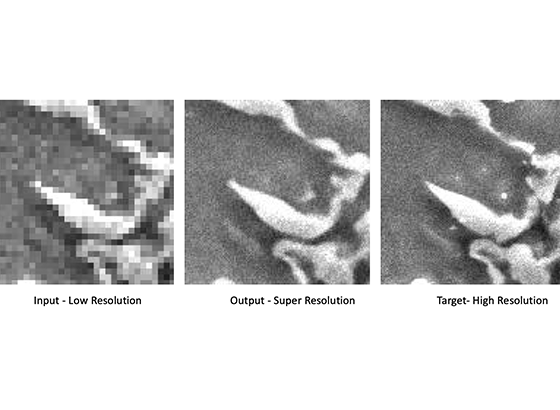News from our Simulation and Data Lab Materials Design: Philipp Schumacher has developed a deep learning based Super Resolution Framework for the first time for SEM (scanning electron microscope) images of microstructures during his master thesis supervised by Setareh Medghalchi, member of the SDL Materials Design.
Super resolution technique by definition in our research is the method to algorithmically recover high resolution information from lower resolution data. Microstructural imaging is an important tool in materials scientific research, e.g. to quantify the occurrence of materials scientific phenomena. In many cases the observed phenomena are too small to investigate with optical microscopes. Therefore, SEM imaging with its much higher magnification is applied. The SEM imaging process is however time-consuming, as SEM images are recorded by sequentially measuring a signal intensity for every pixel of an image. Hence, for higher magnifications the imaging process becomes increasingly slow. This slows down the detection of the phenomena of interest on the surface of a sample. A digital zoom, which could artificially increase the resolution on a sample, in the sense of a magnifying lens would thus be of interest to support the detection of the relevant metallurgical concepts. The recent advances in machine learning brought several possibilities to achieve such digital zooms with increasingly good performance, labelled as super-resolution. These technologies are not bound to the SEM imaging process but can also be applied to an image in a postprocessing step and could be used as an aiming aid in electron-optical microscopes.
The goal of this work is to find an algorithm that can increase the resolution of existing SEM images of metallic surfaces, based on machine learning. Therefore, a dataset of metallurgical SEM images of different resolutions needs to be generated. Based on this dataset the relation between LR and HR data is to be inferred. This is achieved via the training of a machine learning model on the generated data.
© SDL Materials Design
